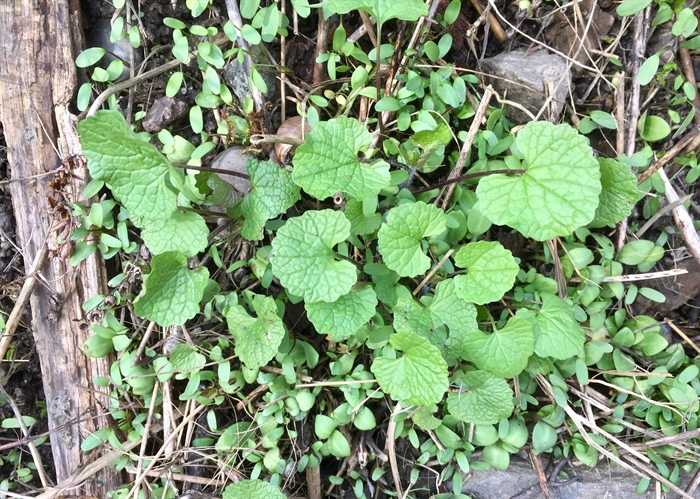
Garlic mustard is an invasive species of plant that is also delicious and full of nutrients.
Image Credit: SUBMITTED/Michéle Wood
April 19, 2017 - 12:00 PM
OPINION
There is an equally terrible and delicious European herb that is sweeping its way across North America. Garlic mustard, or Alliaria petiolata, is starting to make its appearance in the Okanagan Valley.
The problem with garlic mustard is the anti-mycorrhizal properties of the roots. This means that they will inhibit the growth of beneficial fungi in the soil. In a natural forest, this is a big problem. Over time, carpets of this herb will dominate the forest floor and choke out the sensitive and diverse native plant species, especially the plants that need fungi to exist. Wild orchid species are a good example of a sensitive, fungi-dependent plant.
Garlic mustard also happens to be edible, delicious and rich in nutrients. It would be very difficult to find a leafy vegetable with more nutrients per gram. The flavour is quite easy to guess; garlic mustard tastes like... garlic and mustard. Salads, pesto, sandwiches, are all great ways to consume this tasty herb.
Garlic mustard has been working its way across North America at the same pace as European settlers. It has had more time to settle into the East and has completely taken over in many forests and national parks. In the US and Ontario there are even a few garlic mustard festivals. These include education, harvesting, and my favourite, cooking competitions. In the Central Okanagan it can be found in old neighbourhoods, but the biggest patch I have found is in Fintry Provincial Park on Westside Road.
In April and May this year the garlic mustard will be growing in leafy bunches until it begins bolting and produces a tall central stem and eventually a bunch of white flowers. At first the entire plant can be harvested but as it grows upwards only the top can be used. It is a good idea to tear out the root either way to help stop it from spreading. It is best to avoid when the seeds are out to prevent carrying them to a new location.
Foraging invasive herbs in our own neighbourhoods is a great way to improve our local ecology and our health at the same time. Going for a wild salad instead of farmed foods has a multitude of benefits as well and should be a staple skill of any person who is interested in eating locally and seasonally.
Check out my Facebook page Everything Wild to stay up to date on our local foraging scene.
We welcome your comments and opinions on our stories but play nice. We won't censor or delete comments unless they contain off-topic statements or links, unnecessary vulgarity, false facts, spam or obviously fake profiles. If you have any concerns about what you see in comments, email the editor.
News from © iNFOnews, 2017